| [1] Gressot LV, Mata JA, Luerssen TG, et al. Surgical treatment of congenital thoracolumbar spondyloptosis in a 2-year-old child with vertebral column resection and posterior-only circumferential reconstruction of the spine column: case report. J Neurosurg Pediatr.2015;15(2):207-213.[2] Machino M, Yukawa Y, Ito K, et al.Risk factors for poor outcome of cervical laminoplasty for cervical spondylotic myelopathy in patients with diabetes. J Bone Joint Surg Am. 2014;96(24):2049-2055.[3] Zhou J, Li X, Zhou X, et al. Anterior decompression and hybrid reconstruction with titanium mesh cage plus plate and self-locking stand-alone cage for the treatment of three-level cervical spondylotic myelopathy. J Clin Neurosci.2017;43:196-201.[4] Jang JW, Lee JK, Lee JH, et al. Effect of posterior subsidence on cervical alignment after anterior cervical corpectomy and reconstruction using titanium mesh cages in degenerative cervical disease. J Clin Neurosci.2014; 21(10):1779-1785.[5] Lee SE, Jahng TA, Kim HJ, Correlation between cervical lordosis and adjacent segment pathology after anterior cervical spinal surgery. Eur Spine J.2015;24(12): 2899-2909.[6] Daniels AH, Hart RA, Hilibrand AS, et al.Iatrogenic Spinal Cord Injury Resulting From Cervical Spine Surgery. Global Spine J.2017;7(1 Suppl):84S-90S.[7] Shamji MF, Massicotte EM, Traynelis VC, et al.Comparison of anterior surgical options for the treatment of multilevel cervical spondylotic myelopathy: a systematic review. Spine (Phila Pa 1976).2013;38(22 Suppl 1):S195-209.[8] Cheung JP, Luk KD. Complications of anterior and posterior cervical spine surgery. Asian Spine J. 2016;10(2):385-400.[9] 马向阳,尹庆水,夏虹,等.异形钛笼在中上颈椎腹侧病变切除后稳定性重建中的应用[J].中国脊柱脊髓杂志, 2012,22(10): 894-897.[10] Cho PG, Ji GY, Park SH, et al. Biomechanical analysis of biodegradable cervical plates developed for anterior cervical discectomy and fusion. Asian Spine J.2018;12(6): 1092-1099.[11] Dai J, Shen G, Yuan H, et al. Titanium Mesh Shaping and Fixation for the Treatment of Comminuted Mandibular Fractures. J Oral Maxillofac Surg.2016;74(2):337.e1-337. e11.[12] Hirota M, Ikeda T, Tabuchi M, et al. Bone generation profiling around photofunctionalized titanium mesh. Int J Oral Maxillofac Implants. 2016;31(1):73-86. [13] Nakagawa H, Mitsugi T. Surgical strategies in interbody titanium cage fixation for cervical spondylosis and discogenic disease. World Neurosurg. 2014;82(3-4):337-338.[14] Smith KA, Russo GS, Vaccaro AR, et al. Scientific, clinical, regulatory, and economic aspects of choosing bone graft/biological options in spine surgery. Neurosurgery. 2018. doi: 10.1093/neuros/nyy322.[15] Alonso F, Rustagi T, Schmidt C, et al. Failure patterns in standalone anterior cervical discectomy and fusion implants. World Neurosurg.2017;108:676-682.[16] Weber MH, Fortin M, Shen J, et al. Graft Subsidence and Revision Rates Following Anterior Cervical Corpectomy: A Clinical Study Comparing Different Interbody Cages. Clin Spine Surg.2017;30(9):E1239-E1245.[17] Chen Y, Chen D, Guo Y, et al. Subsidence of titanium mesh cage: a study based on 300 cases. J Spinal Disord Tech. 2008;21(7):489-492.[18] Kani KK, Chew FS. Anterior cervical discectomy and fusion: review and update for radiologists. Skeletal Radiol. 2018; 47(1):7-17.[19] Yang HS, Kim KW, Oh YM, et al. Usefulness of titanium mesh cage for posterior C1-C2 fixation in patients with atlantoaxial instability. Medicine (Baltimore).2017;96(36): e8022.[20] Cheung JP, Luk KD. Complications of anterior and posterior cervical spine surgery. Asian Spine J.2016;10(2):385-400.[21] Jang JW, Lee JK, Lee JH, et al. Effect of posterior subsidence on cervical alignment after anterior cervical corpectomy and reconstruction using titanium mesh cages in degenerative cervical disease. J Clin Neurosci.2014; 21(10):1779-1785.[22] Oh KW, Lee JH, Lee JH, et al. The Correlation Between Cage Subsidence, Bone Mineral Density, and Clinical Results in Posterior Lumbar Interbody Fusion. Clin Spine Surg. 2017;30(6):E683-E689.[23] Doria C, Mosele GR, Balsano M, et al.Anterior decompression and plate fixation in treatment of cervical myelopathy: A multicentric retrospective review. Acta Orthop Traumatol Turc.2018;52(3):185-190.[24] Katsumi K, Izumi T, Ito T, et al.Posterior instrumented fusion suppresses the progression of ossification of the posterior longitudinal ligament: a comparison of laminoplasty with and without instrumented fusion by three-dimensional analysis. Eur Spine J. 2016;25(5): 1634-1640.[25] Shao JL, Li ZZ, Wang J, et al.[Application of titanium mesh in anterior cervical subtotal corpectomy with locking plate for cervical spondylotic myelopathy]. Nan Fang Yi Ke Da Xue Xue Bao.2009;29(6):1226-1228.[26] Chen BH, Gu SR, Zhang M, et al. [Anterior revision surgery for the treatment of cervical spondylosis after anterior decompression and titanium mesh fusion]. Zhongguo Gu Shang.2014;27(2):132-136.[27] Zhang Y, Quan Z, Zhao Z, et al. Evaluation of anterior cervical reconstruction with titanium mesh cages versus nano-hydroxyapatite/polyamide66 cages after 1- or 2-level corpectomy for multilevel cervical spondylotic myelopathy: a retrospective study of 117 patients. PLoS One.2014;9(5): e96265.[28] Okawa A, Sakai K, Hirai T, et al. Risk factors for early reconstruction failure of multilevel cervical corpectomy with dynamic plate fixation. Spine (Phila Pa 1976).2011;36(9): E582-587.[29] 宋萌,朱灏宇,朱庆三,等.单节段颈椎椎体次全切除钛笼植骨融合术后钛笼下沉相关危险因素分析[J].中国脊柱脊髓杂志, 2017,27(8):681-685.[30] Acosta FL, Aryan HE, Chou D, et al. Long-term biomechanical stability and clinical improvement after extended multilevel corpectomy and circumferential reconstruction of the cervical spine using titanium mesh cages. J Spinal Disord Tech. 2008;21(3):165-174. |
.jpg)
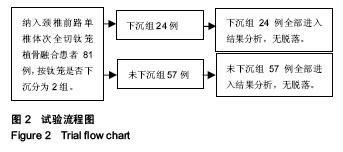
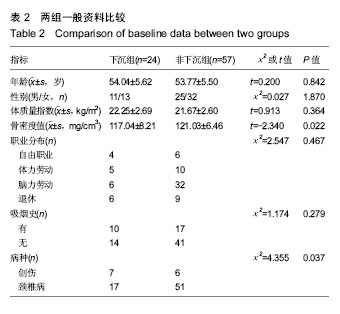
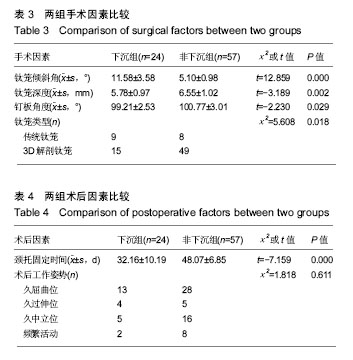
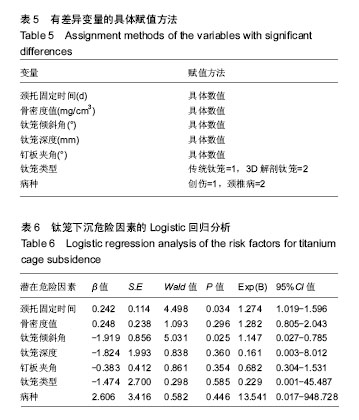
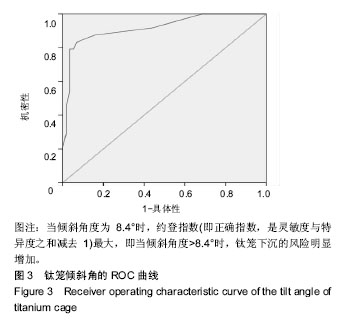
.jpg)
.jpg)
.jpg)